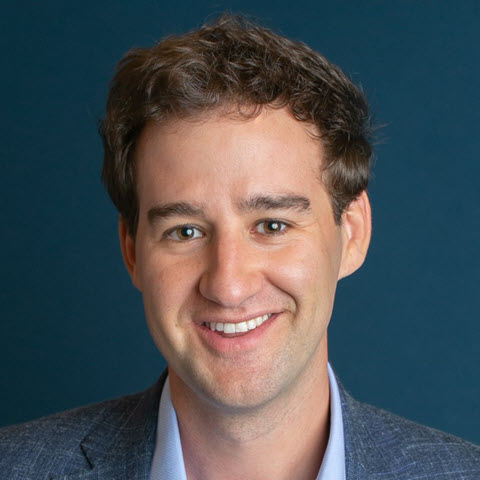Low- and moderate-income (LMI) customers are interested in utility weatherization programs, but participation in this customer group is often low because of a lack of awareness, complicated enrollment processes, and financial, structural, and institutional barriers.
There’s a lot of room for improvement, but your utility doesn’t have to tackle this challenge alone. Simplifying the enrollment process can help, and utilities can also get a boost when they partner with local organizations. Doing so can result in new funding streams and greater reach.
In this blog, we highlight six ways these community partnerships can help support not only enrollment but service delivery as well.
Take advantage of federal- and state-level programs and work with public agencies
Utilities can collaborate with weatherization assistance program (WAP) partners (the US Department of Energy’s WAP is popular) to support low-income programs, using federal funding to share costs on various program aspects such as:
- Program marketing
- Customer intake
- Health and safety projects
- Quality assurance
- Tools and equipment
- On-site labor
By partnering with WAP agencies, utilities like Rocky Mountain Power (RMP) and ComEd have seen significant reductions in overhead costs. For example, RMP covers only 15% of weatherization services costs in Idaho, with the remaining 85% funded by two WAP providers. Similarly, ComEd shares preweatherization health and safety upgrade costs equally between state and utility programs.
When WAP isn’t a suitable partner due to funding or expertise limitations, utilities can collaborate with other public agencies or utilities to serve LMI customers effectively. Single-fuel utilities often partner with other utilities to run joint weatherization programs, reducing costs.
Streamline program administration through close coordination and partnership
Some states use a single statewide agency to coordinate with WAP agencies and other partners, streamlining program rules and ensuring the effective use of funds. In other states, utilities work with WAP administrators to standardize program requirements and make sure all residents can access weatherization.
Utilities in Massachusetts run the Low-Income Energy Affordability Network (LEAN) Multifamily program with the help of LEAN agencies. LEAN coordinates low-income weatherization efforts across the state. The group consists of community action agency recipients of the DOE’s WAP funds, utilities, and other stakeholders. This statewide model with a lead coordinator makes it easier for Massachusetts to scale the delivery of streamlined programs to LMI customers.
Energy Outreach Colorado (EOC) manages any income-qualified weatherization program Xcel Energy offers in Colorado. It also serves as the single point of contact between community action agencies, the state energy office, and other stakeholders. According to a program manager at Xcel Energy, working with EOC has helped the utility develop its capabilities and reduce costs by simplifying coordination efforts.
Enter into data-sharing agreements
Sharing LMI customers’ relevant information across state agencies can make it easier to identify customers who will benefit from weatherization support. And it makes it easier for these customers to apply for certain programs. Your utility can partner with other groups to access and share this information.
For example, Tennessee Valley Authority (TVA) launched its Home Uplift program for LMI customers in 2018. As part of its strategy, the utility focused on specific neighborhoods that were:
- In large cities within TVA’s service territory
- Had high concentrations of LMI customers
To help manage the program, TVA developed the WAPez system with CLEAResult and Energy Datametrics. This was an important step that helped TVA streamline and coordinate its WAP efforts.
Partner with social interest groups to make homes safer
Homes sometimes have health and safety issues that residents need to fix before the utility or utility partner begins weatherization projects. Utilities offer make-ready work as part of energy efficiency upgrades through various weatherization, financing, and partnership programs. They rely on collaborations for program implementation and funding, including:
- The WAP
- Local healthcare authorities
- Nonprofit organizations
- Social interest groups that want to promote nonenergy services
These groups can either pay for the repairs or share costs with customers.
Utilities can also partner with or contract local organizations for funding, insurance, and training to undertake more advanced upgrades. These upgrades can include removing asbestos and lead paint and replacing tube-and-knob wiring.
The Home Energy Solutions—Income Eligible program from Energize Connecticut works with hospitals, local health departments, and the Connecticut Department of Public Health to address health and safety issues before energy efficiency work begins.
Efficiency Vermont’s Healthy Home Energy Assessment helps households solve health hazards like poor indoor air quality, mold, or pests with proper air sealing, insulation, and ventilation. It provides home energy assessments with the Vermont Department of Health.
Work with community-based organizations to improve LMI outreach
Working with community-based organizations (CBOs) can expand your reach to LMI customers and build trust. The E Source white paper The energy equity framework that benefits customers, utilities, and underserved communities describes how utilities can work with local CBOs to understand, engage, and serve customers who haven’t historically benefited from utility programs.
Austin Energy uses relationships with local associations and CBOs to reach customers through events. The utility offers sponsorship support and participates in events to have one-on-one conversations with customers and promote program participation.
Use community-based blitzes to reach specific groups and cut program costs
Utilities are using a neighborhood-based approach to increase the number of homes their DSM programs reach. Consider focusing these blitzes on communities with more LMI customers.
Duke Energy looks for neighborhoods where at least half of the residents qualify for LMI weatherization services. Once a neighborhood qualifies for its Neighborhood Energy Saver Program, the utility sends mailers and involves community leaders to engage residents and make them aware of the free services.



